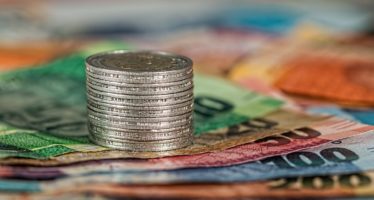2022 Guyana National Budget – Heavy on Higher Living Standards (Part 1)

Part 1 of this column reviews social measures announced in Guyana’s 2022 national budget. Part 2 will review major development initiatives.
Set against the backdrop of strong economic growth in 2021, in which real GDP is estimated to have grown by 19.9 percent – in spite of the ravages of the COVID pandemic, severe countrywide flooding, and rising inflation – Guyana’s massive $553 billion 2022 budget focuses heavily on social programs aimed at improving the livelihoods of the people.
Themed “Steadfast Against All Challenges, Resolute in Building Our One Guyana,” the budget which is 44% greater than last year’s, also proposes major infrastructural development/improvements (which will be addressed in Part 2 of this column).
With the goal of improving the livelihood of the population in the wake of increasing prices largely due to global supply chain disruptions, the budget proposed several measures aimed at increasing disposable incomes and reducing costs for individual Guyanese.
The budget announced that the monthly income tax threshold will be increased from $65,000 to $75,000 monthly, thereby releasing a total of $1.3 billion into the hands of current taxpayers both in the public and private sectors.
The budget also proposes to increase the monthly Public Assistance payment for individuals facing distressed circumstances from $12,000 to $14,000, benefiting 18,000 persons and providing an additional $432 million in disposable income to these individuals.
The Old Age Pension, which benefits the elderly, will be increased from $25,000 to $28,000, placing an additional $2.3 billion of disposable income in the hands of the country’s 65,000 old age pensioners. The Old Age Pension was increased last year, from $20,500 to $25,000 monthly, providing much needed relief for the elderly.
Parents with school-aged children will also benefit from an increase in uniform grants for their children – from $4,000 to $5,000 per year for each child. This according to the budget will place $200 million of disposable income in the homes of 200,150 children attending both public and private school.
In addition, parents with children attending school will also benefit from the “Because We Care Cash Grants.” This grant will be increased from $15,000 to $25,000 annually per child, benefitting households with children attending both public and private schools to the tune of $2 billion.
In another move to increase the disposable incomes of individuals in the work force who pay life and health insurance premiums, the budget proposes to allow taxpayers a deduction from their chargeable income for premiums paid for life and medical insurance up to a maximum of 10 percent of their income or $30,000 monthly, whichever is lower. It is estimated that this measure will cost approximately $1.1 billion through a reduction in taxes payable.
Individuals with modest savings are also set to benefit from a reduction in withholding taxes charged on interest income earned on deposits in the banking system. The budget proposes to remove the withholding tax from individuals whose total interest income does not exceed $10,000 per annum. This measure is expected to cost $30 million.
With the aim of helping individuals in need who require dialysis, the government proposes
to introduce a Dialysis Support Programme under which it will finance up to $600,000 per annum worth of dialysis treatment for each and every dialysis patient in Guyana. It is expected that this programme will provide assistance to almost 300 persons at a cost of $180 million.
In an indirect method to ease the cost of living through lowers prices for fam produce, the government proposes to arrange monthly farmers markets at various locations across the country where farmers will be able to sell their produce directly to the public. It is recognized that prices have partially risen because of a number of factors, including transportation cost and multiple layers of handling and reselling from farm to final retail. Therefore, consumers would pay lower costs by buying directly from farmers.
To assist low-income individuals to buy/build homes, the budget has proposed an increase in the Low-Income Mortgage Loan Ceiling. This is the third increase in the last two years through a government supported program under which low-income individuals can obtain loans from commercial banks at lower than market rates. The loan ceiling was increased from $12 million to $15 million. The two previous increases were from $8 million to $10 million and $10 million to $12 million.
In other indirect measures to reduce costs for consumers, the budget proposes to extend the application of the freight cost adjustment on imported goods which was due to expire at the end of January 2022. The freight cost adjustment is a component in the CIF (cost, insurance freight) value used in the calculation of import taxes. It will be rolled back to pre-pandemic levels. This will have an effect of reducing the import duties, excise taxes, and VAT charged on imported items, and therefore potentially reduce the cost of imported goods and consequent price increases for consumers. This measure is expected to cost an estimated $6 billion in 2022.
The government also proposes to lower the excise tax on fuel, based on its commitment to lower the tax when the world market prices for fuel increases. First introduced last year, when the excise tax on gasoline and diesel was reduced twice, from 50 percent to 35 percent and then from 35 percent to 20 percent, the excise tax will be further reduced from 20 percent to 10 percent.
With the cost of living in Guyana remaining an ongoing concern with political consequences, the Minister Finance announced that the government will engage communities across the country in an attempt to find solutions to help the most vulnerable.
He stated in the budget, “given the complexity of the factors driving price increases and the limited policy instruments available to mitigate these increases, we intend to engage in further consultations with the communities most affected both on the coast and in the hinterland on possible interventions to help ease the impact on the most vulnerable in our society.”
The budget allocated a sum of $5 billion to meet the cost of the interventions to be implemented following the consultations.
With the intent of helping local businesses to compete under the new local content framework the government plans to take steps wherever practicable to minimise disparities arising from the tax system that can disadvantage Guyanese businesses against their international counterparts. This move aims to help improve the competitiveness of Guyanese companies, help secure business opportunities for them, and thereby create jobs for Guyanese nationals.
The government will also remove the existing 2 percent withholding tax on resident contractors. This tax, according to the budget, affects the liquidity of resident contractors and undermined their competitiveness. This measure will cost an estimated $2 billion
The budget also proposed the removal of the 14 percent VAT on cranes, safety equipment, and oil spill response equipment, as part of ensuring that as many Guyanese businesses as possible can equip themselves to participate in available opportunities.
The government is evidently seeking to quell uncertainties resulting from higher prices by indirectly putting more money in the pockets of individuals. Whether or not Guyanese will expect permanent interventions as a result of higher oil revenues will remain a debateable question for years to come. For now, they should be thankful.
Dwarka Lakhan
Dwarka Lakhan is a pioneer in emerging markets journalism in Canada. His first emerging markets article, “Africa Joins Ranks of the Emerging,” appeared in Investment Executive, Canada’s leading newspaper for financial advisors, in September 1994. Since then he has written hundreds of articles on the full spectrum of emerging markets and has conducted more than two thousand interviews with emerging and frontier markets investment professionals.
Related Articles
2022 Guyana National Budget – Heavy on Higher Living Standards (Part 2)
Part 1 of this column reviews social measures announced in Guyana’s 2022 national budget. Part 2 will review major development
Smuggling gold, Guyana’s highest Money Laundering Risk
Long considered a serious but largely ignored crime, gold smuggling has been ranked as one of the highest money laundering
Can Guyana emerge as a hotbed for financial and related crimes?
As Guyana’s economy steams ahead on the back of its bourgeoning oil sector, buoyed by a flood of foreign investments,



